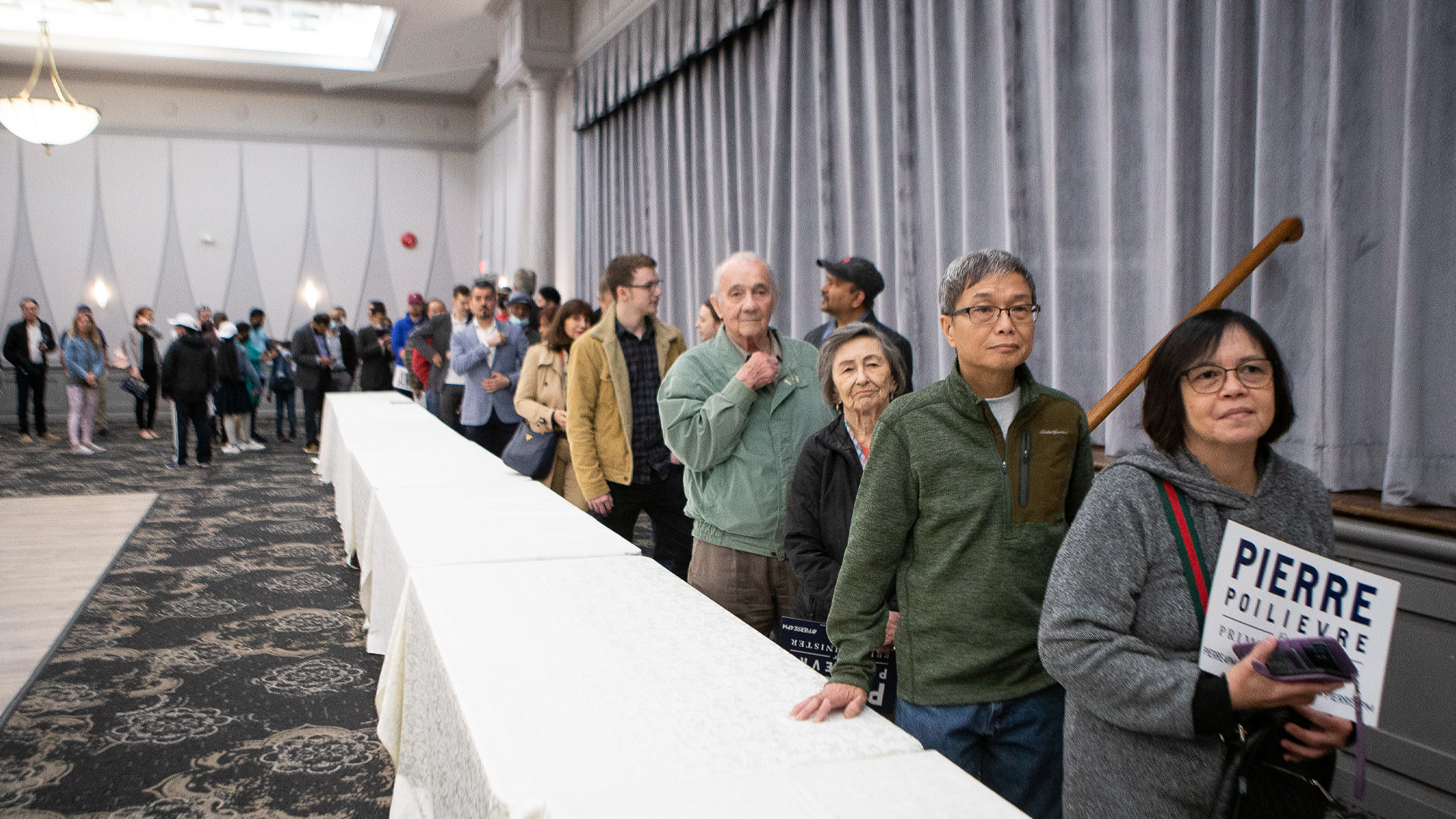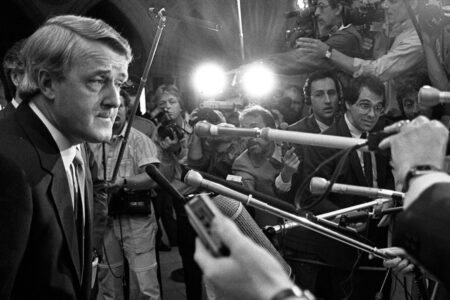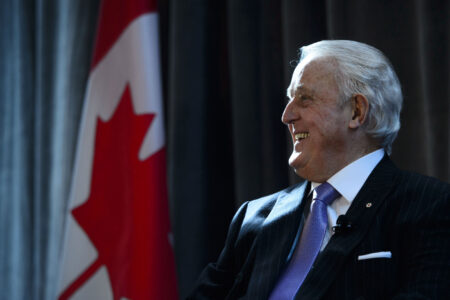
On Sept. 10, the Conservative Party of Canada (CPC) will announce the results of the mail-in balloting to choose a new permanent leader to replace Erin O’Toole, who was dismissed in February when a majority of Conservative MPs delivered a stinging rebuke to his fleeting tenure as party leader.
O’Toole’s brusque ouster was unprecedented: 62 per cent of Conservative MPs voted to remove him under Reform Act powers that enabled the caucus vote to take place. But what has come out of this process for the party in its ensuing leadership contest has been equally unprecedented.
Eighteen years into its existence as a party, the CPC is at an inflection point. That might sound like a cliché, but after three successive losses at the hands of Justin Trudeau’s Liberal Party of Canada, the next election campaign will be a “do-or-die” moment for the party.
Conservatives instinctively know this. After losing the last two elections to a prime minister and Liberal campaign that were not merely vulnerable, but also beatable, CPC brass and the broader membership are intent on drawing Liberal blood. Exasperation, anger and sheer contempt for Trudeau have coloured the party’s 2022 leadership race, introducing unparalleled levels of vitriol and toxicity into a contest that should have been about uniting Conservatives after a tumultuous year.
But what’s made this race fascinating is not intrigue around its mostly preordained outcome – a likely first-ballot victory for Pierre Poilievre. Instead, it’s the organizational, ideological and party unity dynamics that have proven instrumental to the course of this leadership race. Beyond Sept. 10, these dynamics will continue influencing the CPC’s path in the lead-up to what could become an existential election for Canada’s modern conservative movement.
Historic membership sales and fundraising
While the third CPC leadership vote in five years has been inherently divisive, it has been accompanied by historic membership sales and fundraising that signify a boon for party renewal. In late June, the party announced that 675,000 members are eligible to vote in the leadership contest. This figure far surpasses the nearly 270,000 individuals who were eligible to vote in the 2020 leadership campaign that elected Erin O’Toole.
These numbers represent extraordinary and historic growth for the party’s membership list. Interestingly, the party’s second-highest recorded membership total was not while it was in government for a decade; rather it was 18 years ago during the Progressive Conservative-Reform-Alliance merger. The prolonged merger process combined membership sales from several leadership contests to reach 282,000 members in 2003-04.
Today’s 675,000 figure is especially impressive given that at the contest’s onset there were only 113,000 active CPC members nationally. The fact that 95 per cent of new members purchased their memberships online reflects positively on the respective leadership campaigns’ ability to execute robust digital membership drives.
On this front, Poilievre is the undisputed winner: earlier this summer, his campaign announced it had signed-up an estimated 312,000 new party members while raising $4 million in the second quarter from nearly 37,000 donors. During the same quarter, Jean Charest’s campaign managed to pull in only $1.3 million from about 4,200 donors.
Before he was disqualified from the race in early July by the CPC’s leadership election organizing committee, Patrick Brown’s campaign claimed it had sold more than150,000 memberships. Charest’s team declined to share its membership sales.
Populism overtaking traditional conservatism
Since landing on the Opposition benches seven years ago, the CPC has increasingly suffered from an identity crisis, unable to clearly define its brand of 21st century conservatism. We’re now deep into the throes of yet another leadership contest where several candidates representing a variety of conservative ideologies have come forward.
Throughout his decade as prime minister, Stephen Harper was able to keep these various factions in one big blue tent through strong leadership and his ability to keep these distinct groups in line by offering cabinet posts and other key roles to members of his government. But since 2015, the party has appeared increasingly lost, lurching from ideological positions to more pragmatic ones with little success. Since February, when O’Toole’s dismissal coincided with the “Freedom Convoy” occupying Ottawa, much of the party has swung to the populist right, embracing a form of grievance-based politics that resembles “Trumpism.”
Poilievre has proudly assumed the mantle of this divisive style of politics, reinforced by leadership candidates Leslyn Lewis and Roman Baber. Meanwhile, Jean Charest, Patrick Brown and Scott Aitchison have spearheaded pragmatic campaigns synonymous with “progressive conservatism.”
But with mere days until the votes are tallied, it’s apparent that Poilievre’s brand of populist, grievance-based politics has won the hearts and minds of the majority of CPC members. This marks a clear departure from the CPC’s ability to accommodate a variety of conservative factions since its formation almost two decades ago. Even more worrisome, the influence of the historically dominant Blue Tories is clearly waning.
Although Red Tories played a seminal role in the legacy PC Party, Blue Tories held equal influence in shaping party policy and often dominated leadership elections by sheer numbers. For example, in the 1976 and 1983 PC leadership contests, prominent candidates such as Claude Wagner, Michael Wilson, John Crosbie, Brian Mulroney, Jack Horner and Peter Pocklington all embraced strains of Blue Toryism. They embraced the prevailing neo-liberal consensus in conservative politics but steered clear of the grievance-based politics that has engulfed the party today.
These historical examples are important because they illustrate that even law-and-order, free-enterprise Blue Tories are becoming an endangered species within today’s CPC.
Indeed, they have been submerged by a brigade of “freedom loving,” anti-science, anti-establishment activists who are intent on installing Poilievre as leader – whatever the cost to their party and movement. In doing so, they are rejecting the party’s long, distinguished history of accommodating and representing an assortment of conservative ideologies that are representative of this diverse country and its interests.
For the remaining traditional Conservatives, these developments are disturbing. In its various iterations, the CPC traditionally accommodated Red Tories, Blue Tories, and even social conservatives and libertarians, but is now dominated by factions that do not respect the rule of law and traditional government institutions.
Party unity at a breaking point
The final dynamic that has shaped this contest is that of a party that appears less united than ever in its two-decade history. While a Poilievre victory on Sept. 10 is unlikely to lead to an immediate splintering of the conservative movement, it could result in some of its Quebec MPs resigning in protest. Joël Godin has already said he would “reflect” on “his future political life” if Poilievre wins but fails to pivot to the centre.
Among Charest’s most steadfast supporters are moderate Quebec MPs wary of how a party led by Poilievre could be perceived in their home province. In fact, seven MPs in the 10-member Quebec CPC caucus have endorsed Charest while only one, Pierre Paul-Hus, has backed Poilievre.
Come Sept. 10, the party could face a similar fate to the one the federal Liberal Party experienced in June 1990, when Jean Chrétien defeated Paul Martin for the party’s crown in one of the most divisive leadership elections in Canadian history – and one that coincided with the collapse of the Meech Lake Accord. Shortly after Chrétien won an impressive first-ballot victory in Calgary, Quebec Liberal MPs Jean Lapierre and Gilles Rocheleau abruptly quit the party, protesting the accord’s failure and Chrétien’s alleged role in undermining its passage.
The Liberals did not splinter, but these sudden caucus resignations destabilized Chrétien’s grip on the party in the early years of his leadership. Fortunately for Chrétien, the majority of Paul Martin’s ardent supporters chose to remain in the Liberal fold. While the Chrétien-Martin rivalry was fierce, the outright disdain that Charest and Poilievre hold for one another dwarfs anything seen throughout the Liberal Party’s 1990 leadership contest and subsequent years. It’s also unlikely that many of Charest’s supporters will remain loyal to the party should Poilievre take over the reins.
There is already ample evidence that those opposing Poilievre’s style of grievance-based conservatism are more than willing to speak out and, more importantly, organize.
Last spring, former CPC leadership contender Rick Peterson co-founded “Centre Ice Conservatives” – an organization devoted to championing a centrist brand of conservatism in an ever-more-polarized political environment. It remains unclear whether this nascent entity will seek to influence a Poilievre-led party, remain on the sidelines or disperse into other federal parties. Nonetheless, it’s hard to see prominent moderate Conservatives – such as former Harper ministers Peter Kent and Lawrence Cannon – remaining active in a party run by Poilievre.
Interestingly, Charest has ruled out forming a new centre-right party inspired by French President Emmanuel Macron’s En Marche should he not win the leadership. More striking, the former Quebec premier has declined to run under Poilievre’s banner in the event the latter wins the CPC leadership.
The stakes could not be higher for today’s Conservative Party. It’s likely a Poilievre victory will reinvigorate Trudeau, potentially extending his political lifespan through one more election cycle. If Trudeau’s Liberals are able to defeat the CPC for a fourth consecutive time, the brutal electoral aftermath could send shockwaves through the CPC, fracturing it beyond repair.
Whatever the outcome on Sept. 10, the Conservative Party’s 2022 leadership contest has revealed a fundamentally shifting party that continues to withstand seismic shifts nearly two decades after its inception. While the end result of this race has never truly been in doubt, the organizational, ideological and party unity dynamics that have converged over the past six months to define this contest have surely secured its rightful place in the political history books of our country.










